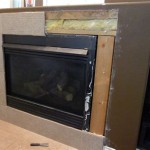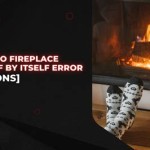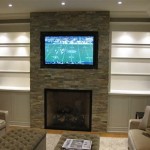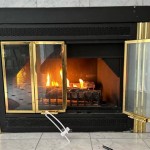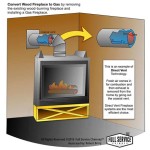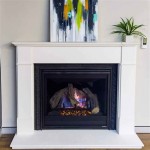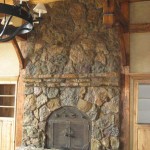Replacement Fireplace Blower Fans: Enhancing Fireplace Efficiency and Comfort
Fireplaces, historically a primary source of heat, continue to be a popular amenity in many homes. While bringing aesthetic appeal and a cozy ambiance, a fireplace's heating efficiency can be significantly improved with the addition of a blower fan. Over time, however, these fans can wear out or fail. Understanding the role of fireplace blower fans, identifying common issues, and knowing how to select a replacement are crucial for maintaining optimal fireplace performance.
A fireplace blower fan, also known as a fireplace fan kit or a fireplace insert blower, is an electric device designed to circulate warm air from the fireplace into the room. Without a blower, much of the heat generated by the fire rises up the chimney, resulting in wasted energy. The blower pulls cool air from the surrounding room, passes it over the heated firebox or heat exchanger, and then pushes the warmed air back into the room, promoting convection and distributing heat more evenly.
The benefits of using a fireplace blower fan are numerous. Primarily, it increases the overall heating efficiency of the fireplace. It reduces heat loss through the chimney and directs the warmth where it's needed – into the living space. This can translate to lower heating bills, especially if the fireplace is used frequently as a supplemental heat source. Furthermore, the even distribution of warm air eliminates cold spots in the room, creating a more comfortable and consistent temperature throughout. Blower fans also heat up the room faster compared to natural convection alone. They can significantly reduce the time it takes for a room to reach a desired temperature, allowing for more immediate comfort.
Identifying Common Issues with Fireplace Blower Fans
Like any electrical device, fireplace blower fans are subject to wear and tear over time. Recognizing the common signs of a failing blower fan is essential for prompt replacement and maintaining consistent fireplace performance. Several indicators suggest a problem with the blower motor or related components.
One of the most common signs is a reduction in airflow. If the fan is running but producing significantly less warm air than usual, it could indicate a failing motor, a buildup of dust and debris obstructing the fan blades, or a problem with the fan's power supply. A simple cleaning of the fan blades and surrounding area may resolve the issue, but if the airflow remains weak, the motor may be nearing the end of its lifespan.
Unusual noises emanating from the fireplace blower are another tell-tale sign. Grinding, squealing, or rattling sounds often indicate worn bearings within the motor. These noises may start intermittently but will likely become more frequent and louder as the bearings deteriorate further. Ignoring these noises can lead to complete motor failure and potentially damage other components of the fireplace.
Another common problem is a complete lack of operation. If the blower fan fails to turn on at all, the issue could stem from several sources. The power switch itself may be faulty, the wiring connecting the fan to the power source could be damaged, or the motor could have burned out. Before assuming motor failure, it's prudent to check the power switch and wiring for any obvious signs of damage or loose connections. Using a multimeter to test the voltage reaching the fan motor can help determine if the problem lies with the electrical supply.
Overheating is another potential concern. While blower fans are designed to operate in warm environments, excessive heat can indicate a problem. If the motor feels excessively hot to the touch or emits a burning smell, it's crucial to turn off the fan immediately. Overheating can be caused by a number of factors, including a failing motor, blocked airflow, or a voltage issue. Continuing to operate an overheating fan can lead to permanent motor damage and potentially pose a fire hazard.
Finally, intermittent operation can also signify a problem. If the blower fan turns on and off sporadically or requires multiple attempts to start, it may indicate a loose connection, a faulty switch, or a failing capacitor within the motor. These intermittent issues should be addressed promptly to prevent complete failure and ensure consistent operation.
Selecting the Correct Replacement Fireplace Blower Fan
Choosing the right replacement blower fan is crucial for ensuring proper fit, optimal performance, and compatibility with the existing fireplace. Several factors need consideration during the selection process. Matching the specifications of the original blower fan is paramount. This involves identifying the correct voltage, amperage, and physical dimensions of the original unit. This information is typically found on a label affixed to the blower fan itself or within the fireplace's user manual. Using a blower fan with incorrect specifications can lead to poor performance, overheating, or even damage to the fireplace or electrical system.
Accurate measurement of the existing fan's dimensions is essential. The replacement fan must fit properly within the designated space inside the fireplace. Measure the length, width, and height of the fan housing, as well as the diameter of the fan blades. Pay particular attention to the mounting points and ensure that the replacement fan has compatible mounting hardware. If the dimensions are slightly off, the replacement fan may not fit securely, leading to vibration, noise, and reduced airflow.
Airflow, measured in cubic feet per minute (CFM), is another critical factor. The CFM rating indicates the volume of air the fan can move. Selecting a replacement fan with a CFM rating similar to the original is essential for maintaining adequate heat circulation. A fan with a significantly lower CFM rating may not effectively distribute warm air, while a fan with a much higher CFM rating may consume excessive power and create unwanted noise.
Noise level is another consideration, especially for those sensitive to sound. Blower fans can generate varying levels of noise depending on their design and construction. Look for replacement fans with noise ratings (measured in decibels, dB) that are acceptable for the user's environment. Some manufacturers offer "quiet operation" models that incorporate design features to minimize noise levels.
Considering the type of fireplace is also important. Different types of fireplaces, such as gas fireplaces, wood-burning fireplaces, and electric fireplaces, may require different types of blower fans. Gas fireplaces often use blowers that are specifically designed for gas appliances and are equipped with safety features such as thermal overload protection. Wood-burning fireplaces may require more robust blowers capable of withstanding higher temperatures. Electric fireplaces typically have integrated blower systems that are specific to the unit and may not be easily replaceable with generic models.
The brand and quality of the replacement fan should also be taken into account. Opting for a reputable brand known for producing durable and reliable products is crucial. Reading online reviews and researching different brands can provide valuable insights into the quality and performance of various blower fans. Investing in a higher-quality fan may cost more initially, but it can save money in the long run by reducing the need for frequent replacements and ensuring consistent performance.
Installation Considerations for Replacement Fireplace Blower Fans
Installing a replacement fireplace blower fan can be a straightforward process for some homeowners, while others may prefer to enlist the services of a qualified technician. Safety must always be the first priority. Disconnecting the fireplace from the power source before beginning any work is crucial. This prevents the risk of electric shock during the installation process. Locate the circuit breaker that controls the fireplace and turn it off before proceeding. If the fireplace is gas-powered, shut off the gas supply as well.
Once the power is disconnected, carefully remove the existing blower fan. This usually involves unscrewing or unclipping the fan from its mounting bracket. Note the orientation of the old fan and the placement of any wiring connectors. Taking pictures or making diagrams can be helpful for reassembling the new fan correctly. Carefully disconnect the wiring from the old fan, noting the color coding of the wires. If the wiring is damaged or frayed, it's advisable to replace it with new wiring of the same gauge.
Install the new blower fan in the same orientation as the old one. Secure it to the mounting bracket using the original screws or clips. Connect the wiring, matching the color coding of the wires. Ensure that all connections are secure and that there are no loose wires. Improper wiring can lead to malfunctions or even pose a fire hazard. Double-check all connections before restoring power to the fireplace.
After the new blower fan is installed, test its operation to ensure that it is working properly. Turn on the power to the fireplace and activate the blower fan. Listen for any unusual noises or vibrations. Check the airflow to ensure that the fan is effectively circulating warm air into the room. If the fan does not turn on or if it is producing insufficient airflow, double-check the wiring connections and consult the manufacturer's instructions.
If any difficulties arise during the installation process, it's always best to consult a qualified technician. A professional can ensure that the blower fan is installed correctly and safely, preventing potential damage to the fireplace or electrical system. They can also diagnose and resolve any underlying issues that may be affecting the fireplace's performance. For those unfamiliar with electrical work or uncomfortable working with fireplaces, hiring a professional is the safest and most reliable option.

Universal Fireplace Blower Fan 4 Blade Skeleton Style Midwest Hearth

Noisy Gas Fireplace Blower Here S How To Replace It Diy

Ac230v Cross Flow Compact Blower Fan 60 300mm Replacement Fireplace Parts Pellet Stove Wood Gas Burning Com

Fireplace Blower Fans What You Need For Heat Full Service Chimney

Replacement Fireplace Fan Blower With Heating Element For Twin Star Other

Airblaze T14 Universal Fireplace Blower Fan Kit 14 With Temperature And

How To Replace Your Rsf Fireplace Blower Fan Home

Ep 62 Napoleon Wood Stove Replacement Fireplace Blower Fan Kit Hearth Trends

Hongso Fireplace Blower Fan Kit Brick Anew

Blower Motor Replacement For The Security Bis 1 2
Related Posts

